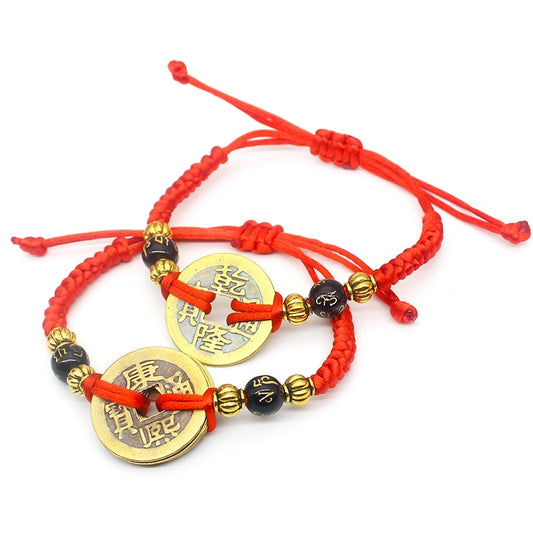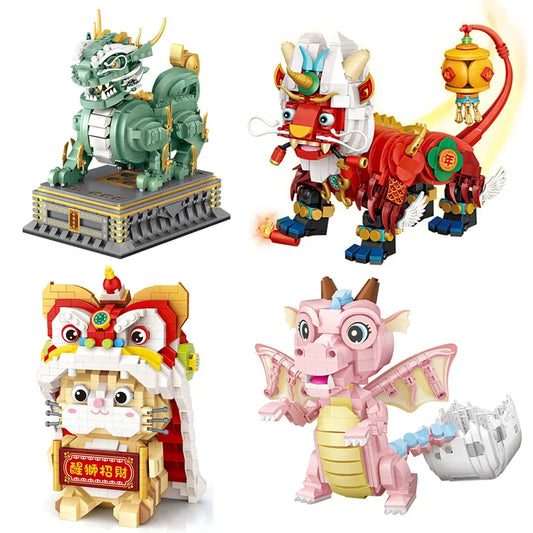China is a land rich in culture and traditions, and one aspect that holds significant importance is the symbolism of colors. Colors have deep-rooted meanings in Chinese culture, representing various emotions, beliefs, and societal values. When it comes to dressing appropriately in China, understanding the significance of colors is crucial. In this ultimate guide, we'll delve into the colors you should avoid wearing in China and the cultural context behind them.
The Cultural Significance of Colors in China
Before we dive into specific colors to avoid, let's explore the cultural significance of colors in China. Unlike the Western world, where colors are often chosen based on personal preferences, Chinese culture associates colors with a range of meanings that stem from history, mythology, and even language.
Red: The Color of Celebration and Luck
Red is undoubtedly the most auspicious color in Chinese culture. It symbolizes happiness, luck, and prosperity. Red is often worn during festive occasions, such as Chinese New Year and weddings, as it is believed to ward off evil spirits and bring good fortune. The color's vibrancy and association with positive energy make it a popular choice for many celebrations.

White: Representing Death and Mourning
In Chinese culture, white has a very different connotation compared to Western cultures. While white is often associated with purity and innocence in the West, in China, it is linked to death and mourning. White is traditionally worn at funerals, and it's considered highly inappropriate to wear this color during joyful events. This cultural difference highlights the importance of understanding color symbolism when interacting with people from diverse backgrounds.
Black: A Color of Formality and Elegance
Black holds contrasting meanings in China. On one hand, it represents formality, elegance, and wealth. It is a popular color for clothing during important business meetings and formal occasions. On the other hand, black is also associated with darkness and bad luck in some Chinese regions. It's essential to recognize that interpretations of colors can vary within different parts of China due to regional cultural influences.
Colors to Avoid in China
When visiting or interacting with Chinese culture, there are specific colors you should avoid wearing to ensure you don't inadvertently offend or convey the wrong message.
Green: Symbolism of Infidelity
In Chinese tradition, green hats are associated with infidelity. Wearing a green hat signifies that one's partner is unfaithful, making it a color to avoid at all costs. While this belief might seem outdated to some, it's essential to respect the cultural nuances and avoid potential misunderstandings.

Yellow: Royal Color with Restrictions
Yellow was historically reserved for the emperor in ancient China and symbolized power and royalty. Even though times have changed, yellow still holds a unique status. While it's not explicitly offensive to wear yellow, it's best to exercise caution, especially in formal settings. If you're unsure, it's safer to choose a different color.
Understanding Cultural Sensitivity
Understanding the cultural sensitivity associated with colors in China is not only a sign of respect but also a way to enhance cross-cultural interactions. By avoiding colors that hold negative connotations or deep-rooted beliefs, you can create a positive and harmonious environment.
Navigating Color Combinations
Understanding the significance of individual colors is essential, but comprehending how colors interact with each other is equally important. In China, certain color combinations hold special meanings and are often used to convey specific messages or sentiments.
Red and Gold: Prosperity and Wealth
Red and gold are a dynamic duo in Chinese culture, symbolizing prosperity and wealth. This combination is frequently seen during festive occasions, such as weddings and New Year celebrations. The vibrant red represents good fortune, while gold signifies opulence and success. Incorporating red and gold into your attire during such events not only aligns with tradition but also showcases your understanding of their cultural importance.

Black and White: Yin and Yang
In Chinese philosophy, the concept of Yin and Yang represents the balance between opposing forces. Black and white are associated with this harmonious duality. Wearing these colors together can symbolize balance and unity. This combination is often considered elegant and is suitable for both formal and casual settings.
Color Symbolism in Different Regions
While many color interpretations are consistent across China, it's essential to note that regional variations can exist. China is a vast and diverse country with a rich tapestry of local traditions and customs. As a result, the symbolism of colors can differ from one region to another.
In Southern China, for instance, white is often associated with purity and brightness, aligning more closely with Western interpretations. However, even within a region, people may hold varying views on color symbolism based on factors like generational differences and exposure to global cultures. When in doubt, engaging in respectful conversations with locals can provide valuable insights into regional color preferences.
Modern Fashion Trends and Adaptations
As China continues to modernize and become a global fashion hub, younger generations are embracing new color trends that might not strictly adhere to traditional symbolism. Urban centers like Beijing, Shanghai, and Guangzhou are witnessing a fusion of global fashion trends and traditional elements.
Pastel colors, once considered unconventional due to their association with Western aesthetics, are becoming more popular among the younger population. These colors, which were once seen as non-traditional, are now embraced as symbols of creativity and individuality. This evolution highlights how fashion is a dynamic expression of culture, influenced by a variety of factors.
Beyond Clothing: Color Symbolism in Gifts
Understanding color symbolism goes beyond personal attire; it extends to gift-giving as well. When presenting gifts in China, the color of the wrapping paper and packaging can carry significant meaning. For instance, red and gold wrapping symbolize good luck and blessings, while white or black packaging may be associated with funerals.
By being mindful of color choices when giving and receiving gifts, you can demonstrate cultural sensitivity and strengthen your interpersonal relationships in a meaningful way.
Embracing Cultural Diversity
As global interactions become more commonplace, appreciating the nuances of different cultures becomes increasingly vital. Color symbolism in China is just one example of how cultural traditions shape our perceptions and interactions. By taking the time to learn about and respect these nuances, we enrich our understanding of the world and foster genuine connections across cultural boundaries.
Final Thoughts
The colors we wear speak a language of their own, and in China, this language is deeply intertwined with cultural beliefs and historical significance. From the auspicious red to the nuanced interpretations of black and white, each color tells a story that is worth knowing and respecting. By avoiding colors like green and yellow, understanding regional variations, and embracing the evolving fashion landscape, you can navigate the vibrant tapestry of China's color symbolism with grace and appreciation. In a world that celebrates diversity, our ability to honor and understand each other's cultural heritage becomes a unifying force that transcends borders and builds bridges of understanding.









